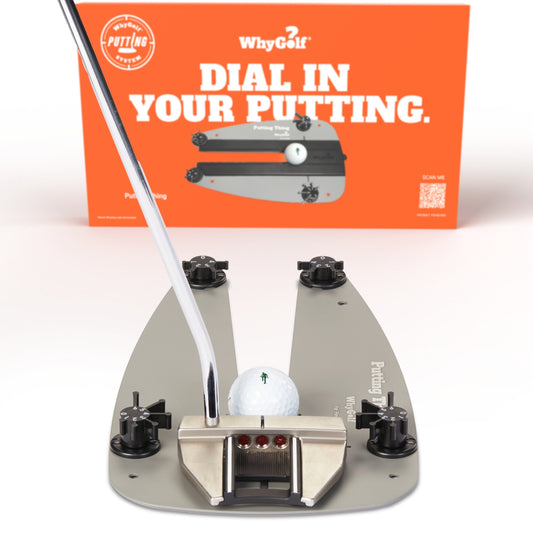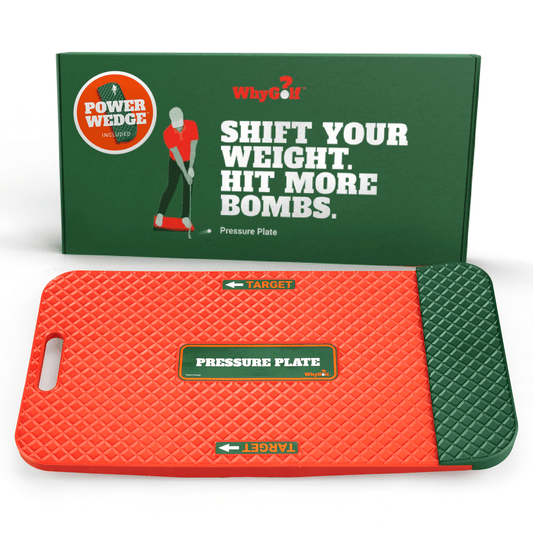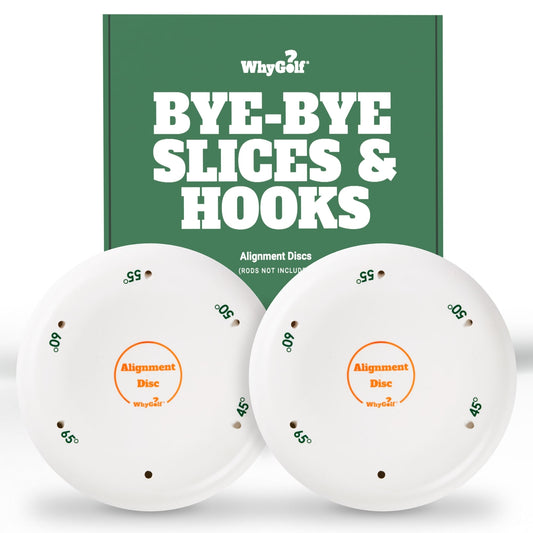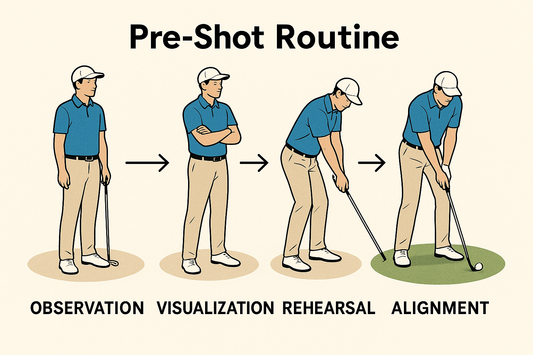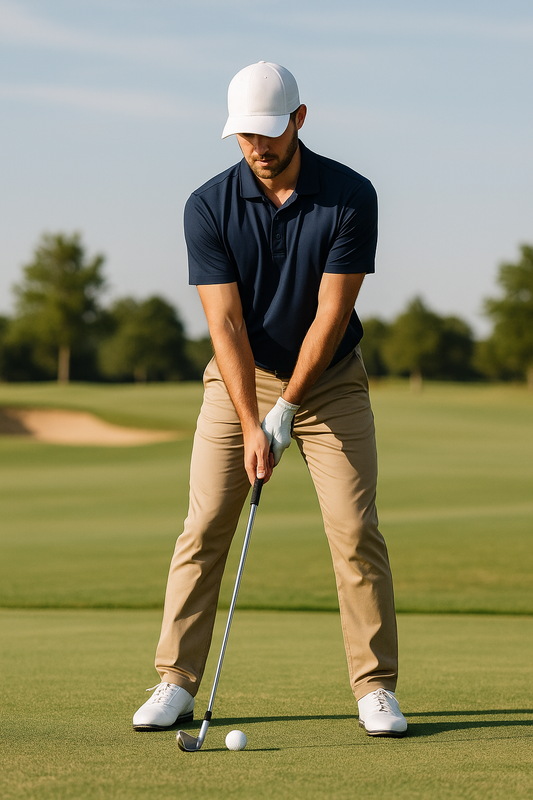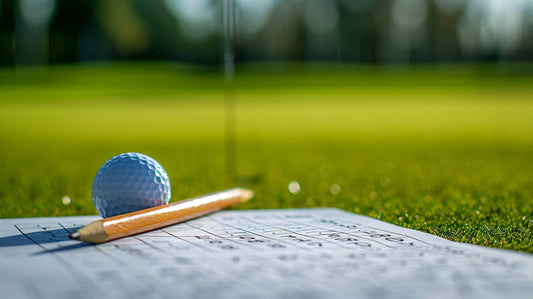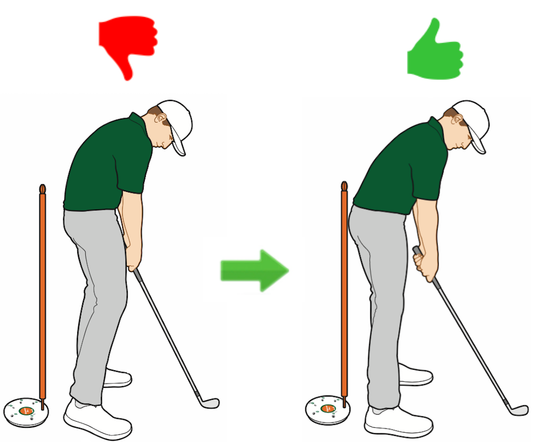Author: WhyGolf WhysGuy
We want to preface this post with the acknowledgment that neither WhysGuy nor anyone from the WhyGolf team claims to know everything about the golf swing. We don’t want anyone to treat what we say here as gospel. While much of what we’ll say is a reflection of decades of dialogue with PGA instructors and players, we’re always learning and we understand that knowledge about the sport of golf will continue to evolve over time.
In this post, WhysGuy will cover:
- The difference between pressure and weight and how the two relate to the golf swing.
- Why a proper pressure shift is a fundamental component to a mechanically sound golf swing.
- How the Pressure Plate should be situated at key checkpoints in the swing.
Pressure vs. Weight: What’s the Difference?
In the golf world, the words weight and pressure are often used interchangeably but the two indicate different things. Instructors, for simplicity’s sake, often talk about “weight” with their students when they are actually talking about “pressure”, so it’s important to delineate the two.
- Weight - the location of our center of mass
- Pressure - the force we apply to the ground
In the golf swing, a player’s weight and pressure can often be in different places at the same time. One of our WhyGolf affiliates, Rob Cheney, gave a useful analogy in one of his GOLFTEC videos:
When a sprinter launches himself off the starting platform at the beginning of a race, he exerts significant pressure to the platform while keeping his weight (center of mass) forward. Put simply, the sprinter’s pressure and weight are moving in opposite directions.
How does this apply to the golf swing? Just like the sprinter, a golfer’s weight and pressure can be in different places at the same time. With practice, we can learn to shift our pressure without significantly shifting our weight, which will allow us to use the ground for power - without swaying. In the following sections, we will explore how the Pressure Plate can be a great tool to help golfers shift pressure effectively.
Why Care About Pressure Shift in the Golf Swing?
A proper pressure shift is a fundamental component to a mechanically sound golf swing. Without a consistent, repeatable transfer of pressure, a player will struggle to attain consistent contact and speed. While one can identify minor differences in those who play the game for a living, we must acknowledge that few, if any, successful professional golfers have a reverse pressure shift (i.e., the transfer of pressure to the trail leg in transition and into the follow-through). We see the vast majority of professional golfers shift pressure to their trail leg in the backswing, and have most of their pressure to their lead leg before impact with their center of mass also moving that direction.
In a nutshell, we want our weight to stay generally centered in our stance while our pressure moves to at least 60% to our trail foot in our backswing and then at the beginning of our transition 70% or more to our lead foot. This should happen before our hands have gotten back down to waist high.
The Design and Logic of the Pressure Plate
Now that we’ve established why we don’t use the words weight and pressure interchangeably, let’s talk about the philosophy behind the Pressure Plate. Our aim in designing the product is to give golfers a simple tool that provides real-time feedback on where they are allocating pressure throughout the swing. While many of us understand theoretically that pressure should move from our trail leg to our lead leg as we hit a golf ball, we often fail to accomplish this in practice. This shouldn’t come as a surprise; most of us can appreciate how hard it is to translate and apply what we know about the golf swing to our actual motor patterns.
A key benefit to the Pressure Plate is that it allows a golfer to feel when they are shifting pressure correctly in the golf swing without the presence of an instructor. There’s also no need to video your swing to try to see if or when you are shifting pressure from one foot to the other - the Pressure Plate will give you real-time feedback as you swing.
The Pressure Plate will tip backward to our trail leg when 60% or more of the golfer’s pressure is applied to their trail side. It will tip forward to the lead leg when 70% or more of the golfer’s pressure is applied to their lead side.
How to Use the Pressure Plate Effectively
There’s an abundance of research indicating that practicing slow, controlled iterations of the desired movement is often the best strategy to permanently change motor patterns. Thus, we encourage golfers to practice their pressure shift on the Pressure Plate in a slow, deliberate manner so they can really feel what’s happening, then slowly speed up as they apply that feeling to normal speed golf shots followed by shots without the board.
A Guide to Weight Shift in Golf Swing - Key Takeaways:
- In the golf swing, we generally want to transfer pressure not weight in the golf swing (center of mass).
- At setup, we want our Pressure Plate to be relatively neutral. The board shouldn’t be tipped to either side.
- At the top of the backswing, we generally want pressure applied to our trail foot with the board tipped away from the target.
- On the downswing, most of our pressure should be applied to our lead side with the Pressure Plate tipped toward the target.
- At follow-through, we want most of our weight and pressure stacked on our lead side with the board tipped to the target.
Given the negative consequences of an incorrect pressure transfer, it’s worth investigating whether you’re shifting pressure properly before you make any other swing changes. Of all the swing faults, an improper pressure shift is the most corrosive and it’s often overlooked. If what we’ve said sounds controversial to you, we encourage you to present your reasoning to us in the comment section below this post.
Ready to fix your pressure transfer? Purchase your Pressure Plate here.
How is this different than other balance boards?
There are a few advantages to the Pressure Plate. One, the Pressure Plate stays level at address, rather than forcing you to be tipped to one side before you start your swing. Two, the Pressure Plate has spikes on the bottom to prevent it from sliding around during the golf swing. Take a glance at videos of other boards online and you’ll often find them rotating and spinning around during the golf swing - the Pressure Plate does not. This connection facilitates the transfer of pressure in the feet to the ground, otherwise known as ground reaction force.
Will the Pressure Plate promote a sway?
No. Our goal in designing the Pressure Plate is specifically to get golfers to transfer their pressure instead of their center of mass (weight). The Pressure Plate is a training aid that can actually fix a sway. While hitting off the Plate, we want golfers to feel their pressure moving into their feet while keeping their torso relatively stable.
What if you use a Stack and Tilt swing technique?
Actually, the Pressure Plate is a great tool to help Stack and Tilters. A simplified premise of S&T is that a player starts with the majority of their pressure on their lead foot (60% or more) and keeps it on that side instead of moving it to their trail foot in the backswing. In reality, the pressure does move somewhat toward the trail foot, but not nearly as much as in a more traditional swing. There are a lot of tradeoffs in every swing technique, but for the average golfer, using this technique can indeed improve contact because the pressure doesn’t move as dramatically from side to side, which makes the location of the bottom of the swing more repeatable. The drawback can be some loss of clubhead speed, but for many, the improved contact can more than make up for this. If you are struggling with inconsistent contact, try using the Pressure Plate by tilting it toward the target at address and keeping it tilted throughout your swing. If nothing else, this is a terrific drill for everyone who struggles with fat and thin shots. You may actually experience for the first time what compressing a golf ball feels like. It’s the best feeling in golf.
I’m concerned about potential negative effects of hitting off a one-inch thick board. Won’t I chunk everything after stepping off?
We see different lies on the course all the time (e.g., lies above the feet and below the feet). Adding an inch for a few shots on the range won’t make a world of a difference. We certainly don’t recommend that a player hit hundreds of balls on the Pressure Plate per day; this will likely produce diminishing returns. We believe a player looking to work on their pressure shift should hit 3 balls on the Pressure Plate, then 3 balls without it and repeat this sequence for only as long as they can maintain their concentration.
Couldn’t you sell this for a lower cost?
We sure wish we could. We know that not everyone who wants a Pressure Plate will be able to afford it. We are doing everything we can to lower our costs so we can lower the price for our customers. As many business owners will understand, it’s expensive to start a company and expensive to design, manufacture and tool up for products like this. Equally costly is what we have to pay to get the word out to potential customers. In spite of the fact that we have yet to make a profit, we’re determined to create the most trusted and innovative golf training aid company in the world.
Additionally, we strongly believe that our products are of great value. People regularly pay up to $600 to buy a new, custom-fit driver that may add a few yards to their drives. The Pressure Plate can help improve performance with all clubs at a fraction of that cost.
Can I hit drivers with it?
It depends on your height and the width of your stance. Most women and juniors will be able to use a driver without an issue. Men over 6 feet who want to hit drivers on the Pressure Plate may want to have their feet hang off the edges of the board. With this said, the beauty of the board is that any progress made with irons will translate to the driver.
Should I get a pressure sensor system instead?
We don’t view the Pressure Plate as a substitute product for the expensive high-tech pressure mats. Although they can help instructors diagnose their students’ swing faults, we don’t see them as helping students feel a correct pressure shift. It’s often the case that golfers struggle to implement their learnings in their practice sessions. Thus, the Pressure Plate is a great complement to these systems, since it can help players shift pressure correctly without the supervision of an instructor. When you’re practicing with a Pressure Plate, it’s clear when you’ve shifted pressure properly, and you get this feedback without having to read and understand complicated graphs corresponding to the kinematic sequence of the golf swing.
Is there a weight limit to the Pressure Plate?
Upon subjecting the Pressure Plate to 900 pounds of force, it still did not break. That said, if you run it over with your truck, don't come to us asking for a refund.
What's the difference between pressure shift and weight shift in golf swing?
Pressure and weight shift are two essential components of a proper golf swing. Pressure shift constitutes the application of force into the ground, whereas weight shift in the golf swing can be thought of as the movement of a player's center of mass. We find it more helpful for a golfer to think of shifting pressure, as ultimately a shift in pressure will move a player's weight. A proper weight shift in the golf swing will be a result of the correct application of pressure. Pressure shift and weight shift are both important in developing a balanced, stable swing that produces consistent, accurate shots.
How can a proper weight shift in golf swing create power?
A proper weight shift in the golf swing can improve a player's power and control significantly. As discussed, proper weight shift in the golf swing should generally be viewed through the lens of a proper pressure shift. When done correctly, a golfer should feel like their weight shift in their golf swing is relatively constant while applying pressure into the ground with their feet at key moments in their swing. The golfer can maintain stability and control over their shot by keeping their weight centered over the front foot during the follow-through. It is critical to note that a proper weight shift in the golf swing should be smooth and gradual, rather than abrupt or jerky, as this can have a negative impact on the swing and shot accuracy.
Check Out Our YouTube Channel For Drills and Tips



